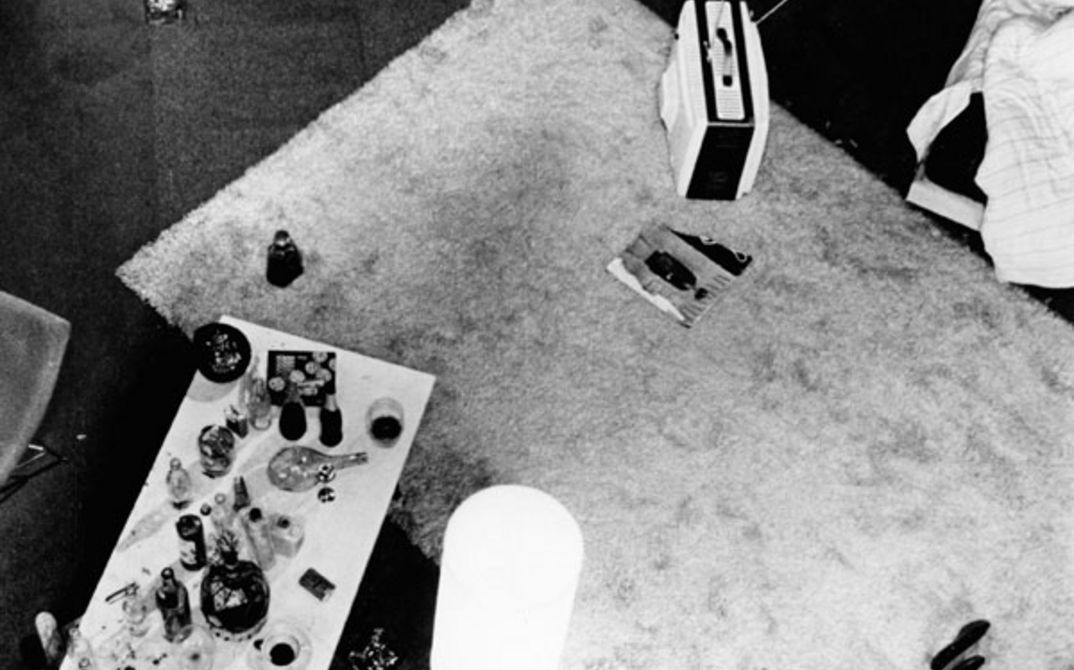On the opening evening, two films are showing where the filmmakers played a significant role in their digitization. The first of these is Michael Klier’s OSTKREUZ (Germany 1991, 26.10.), which is a journey to a post-Wall Berlin leached of color in which stranded existences seek their fortune. Alongside the exciting encounter with long past street views full of empty lots and ruined houses, the film also creates awareness for the idea that even films from the recent past have to be transferred into the digital age. In Wim Wenders' ALICE IN DEN STÄDTEN (Alice in the Cities, West Germany 1974, 26.10, a man and a girl wander through equally unglamorous urban landscapes, yet their journey ends in cheerful fashion in an unusual friendship. Over the days of their shared journey, journalist Philip Winter and the small Alice teach each other to see. Another filmmaker actively involved in the digitization of his work is Peter Fleischmann, for whose film DAS UNHEIL (West Germany 1972, 29.10.), a satire about the hell of small town Germany, two different versions were created digitally. Following the prize-winning film "Jagdszenen aus Niederbayern", Fleischmann's controversial follow-up and its cast of lost churchgoers, old Nazis, "Heimatvertriebene", and APO activists was largely forgotten and can be rediscovered thanks to the digitization. Two version solutions are also suitable for censored films or ones that were cut. Helmut Käutner's melodrama AUF WIEDERSEHN, FRANZISKA! (Germany 1941, 27.10.) had, for example, its propagandistic ending expunged following the end of the National Socialist dictatorship. Marianne Hoppe plays the wife of a photo journalist who travels the world to make his reports and thus neglects his family. Yet when he decides to take better care of his wife and child, Franziska presses him to join a propaganda company after he is drafted to do so. Konrad Wolf's MAMA, ICH LEBE (East Germany 1977, 28.10.) offers an entirely different perspective on the Second World War: four German prisoners-of-war decide to head to the front and into battle against the German army alongside the Soviets, before getting caught up in a conflict of conscience as to where to place themselves without betraying either one side or the other. Konrad Wolf's cameraman Werner Bergmann shot the technical experimental film DEFA 70 (East Germany 1967, 27.10.) in the 60s, in which the journey undertaken by two men in a car is an excuse to capture landscapes, sunsets, and fairground scenes with a 70mm camera. As a link to the current Harun Farocki retrospective, two films by the director are being shown as digital premieres: BILDER DER WELT UND INSCHRIFT DES KRIEGES (West Germany 1988, 27.10.) reflects upon the meaning and use of images in war contexts. Images from Auschwitz become the starting point for an essayistic exploration of the "blind spots" of perception and history. ETWAS WIRD SICHTBAR (West Germany 1982, 28.10.) is also about the power of images, in this case about those of the Vietnam War. Embedded in a fictional plot about a West Berlin couple, the film explores the question of how one becomes politicized and the aftereffects of war and protest. The Rainer Werner Fassbinder Foundation presents the digital premiere of MARTHA (West Germany 1974, 28.10). With this film about a hellishly sadistic marriage, Karlheinz Böhm was finally able to escape his image as an audience darling. Margit Carstensen plays the wife he humiliates, who becomes completely dependent on her despotic husband. Andres Veiel’s documentary BALAGAN (Germany/France 1993, 29.10.) concerns the repercussions of the Holocaust: A Jewish-Palestinian acting troupe puts on a play about the persecution carried out by the National Socialists and grapples with the political instrumentalization of the Holocaust. It was by the Holocaust at the very latest that Jewish history had to be grasped as part of German history. In this context, the discovery and reconstruction of the Polish-Jewish film MIR KUMEN ON (Poland 1936, 28.10.) by Aleksander Ford can be seen as a small sensation: this documentary about a children’s home run by the Jewish Workers' Association close to Warsaw was shot entirely in Yiddish. It survived in different versions in different archives and was now able to be reconstructed and digitized. On the final day of the festival, two films take the viewer back to 1960s Berlin: ZWEI UNTER MILLIONEN (Victor Vicas, Wieland Liebske, West Germany 1961, 29.10.) is a love story about a young couple who want to create a shared existence and move from East to West Berlin to do so. The realistic staging and the footage of the city just before the Wall was constructed make this East-West love story a unique Berlin film. Hansjürgen Pohland’s semi-documentary film TOBBY (29.10.) is from the same year, a portrait of jazz musician Toby Fichelscher, who lets himself drift through the war-scarred city and its smoky pubs. The underground film brings the festival to a close. Germany's communal cinemas are important partners of the archives when it comes to making film heritage visible. For this commitment, the Kinemathek association awards communal cinemas a cinema prize. The award ceremony for the cinema prize will be taking place as part of Film:ReStored on the UNESCO International Day of Audiovisual Heritage, 27.10. (ah)

Film:ReStored_02: The Festival of Film Preservation
"Film:ReStored" presents digitized films from seven decades of German film history, accompanied by presentations, and progress reports dedicated to questions surrounding the digitization of film heritage. This year's debates focus on the cooperation between rightsholders, authors, and archives. The selection of films reflects this fruitful collaboration.


